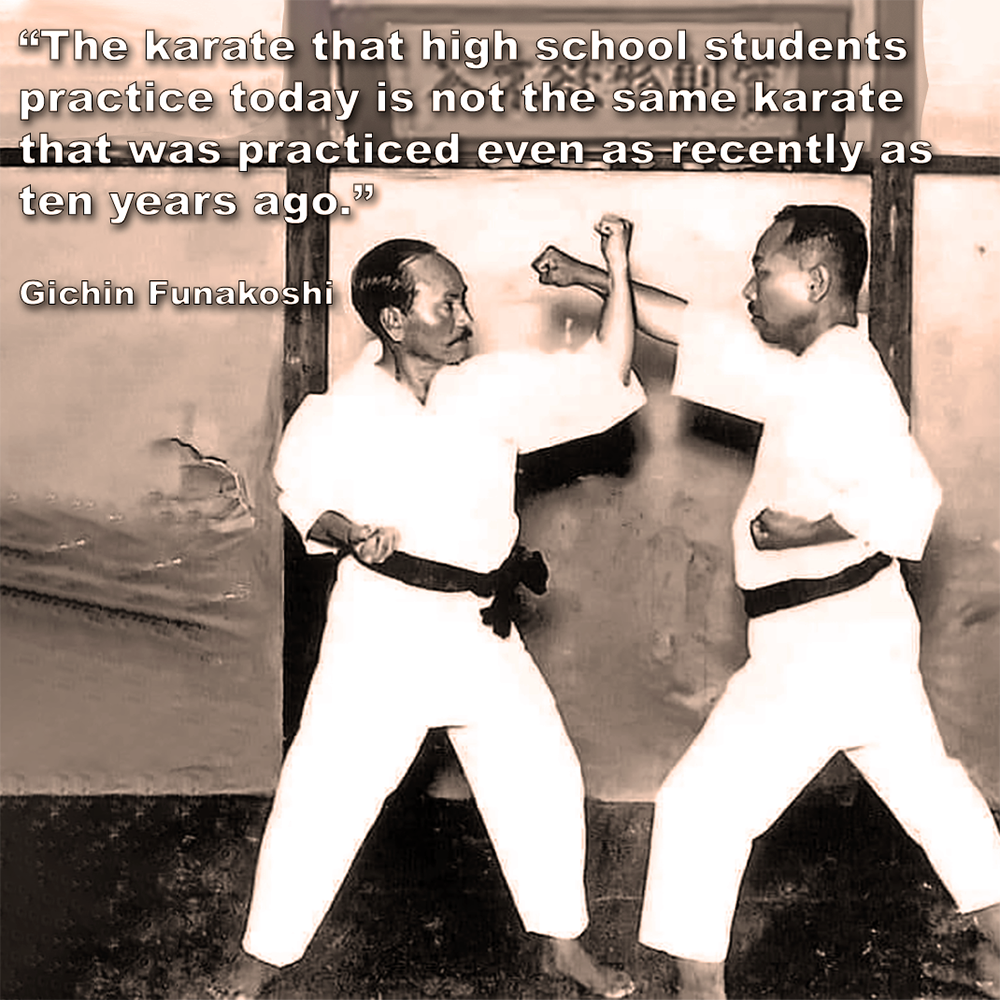
"The karate that high school students practice today is not the same karate that was practiced even as recently as ten years ago, and it is a long way indeed from the karate I learned when I was a child in Okinawa”. - Gichin Funakoshi
Posted by ADAM CARTER on MAY 01, 2024

"The karate that high school students practice today is not the same karate that was practiced even as recently as ten years ago, and it is a long way indeed from the karate I learned when I was a child in Okinawa”. - Gichin Funakoshi
(2 minute 42 second read)
My recent article about ‘bunkai’ exposed a litany of misconceptions in the comments.
The dedication of karate masters over the decades has ensured the transmission of kata. However, their true depth often remains undiscovered.
For many practitioners, karate remains a striking art. Blocking, punching and kicking. So when any analysis of kata is required, many practitioners struggle to grasp the full significance of these movements, mistakenly interpreting them as simple sequences of blocks, punches, and kicks.
As an example, the Naihanchi/Tekki series of kata. They differ significantly from any sparring techniques, or even basic step ‘kumite’ that are practiced – the same could be said of many other kata.
Does this imply their sole purpose is artistic, character-building, or to simply pass a grade? No of course not.
Alternatively, could these kata offer a deeper understanding beyond the fundamentals?
In ‘Karate-Do My Way of Life’, Gichin Funakoshi wrote, “Time change, the world changes, and obviously the martial arts must change too. The karate that high school students practice today is not the same karate that was practiced even as recently as ten years ago, and it is a long way indeed from the karate I learned when I was a child in Okinawa”.
From this, we can conclude that many of the karate masters of the time modified the original Okinawan karate to suit the era, which became the karate everyone practiced.
There’s a question I think every practitioner should ask themselves, after reaching a certain point in their training. “Why am I doing this? Why am I doing this drill? Why am I doing this tactic, this drill, this way? What is it realistically and objectively supposed to accomplish? Does a better way exist?”
Our conditioned perspective, limited to block-punch-kick applications, hinders our ability to perceive other possibilities. Traditional training, by its design, restricts our vision of alternative uses.
You only have to look at the names of techniques to realize this. For example; a ‘chudan uke’ (uchi uke) traditionally used to ‘block’ a straight punch to the middle of the body, is often viewed as nothing more.
The same applies to many of karate’s techniques.
To unlock the true potential of kata, a shift in thinking is necessary. We must acknowledge that traditional training serves an artistic purpose, fostering discipline and character. But, it’s crucial to recognize the existence of a broader karate application, beyond basic blocks and strikes.
A thorough examination of kata movements, considering all their aspects, is vital to discover their intended applications. These applications may often diverge from what we perceive as “typical” karate techniques.
The wisdom of the past masters lies within our reach. The knowledge they meticulously preserved awaits our exploration – but of course we must want to look, want to uncover these hidden layers.
The choice is ours: to embrace this legacy and delve deeper, or remain confined to the familiar routines and the consistent misunderstandings.
It all comes down to what you want out of your training, and what you claim to have it focused on. Some consider anything outside of what the system’s founder presented as breaking with tradition.
Historically, kata was practiced for a different purpose. A kata was valued for what it did, as opposed to what it looked like.
The combative arts are not a stagnant pool of knowledge, reaching perfection in a bygone era. Dismissing the wisdom of past generations would be a grave mistake. Their experiences and lessons form the very foundation upon which we stand today.
Just as they built upon the knowledge of those who came before them, we too have a responsibility to evolve and adapt the art for our times.
